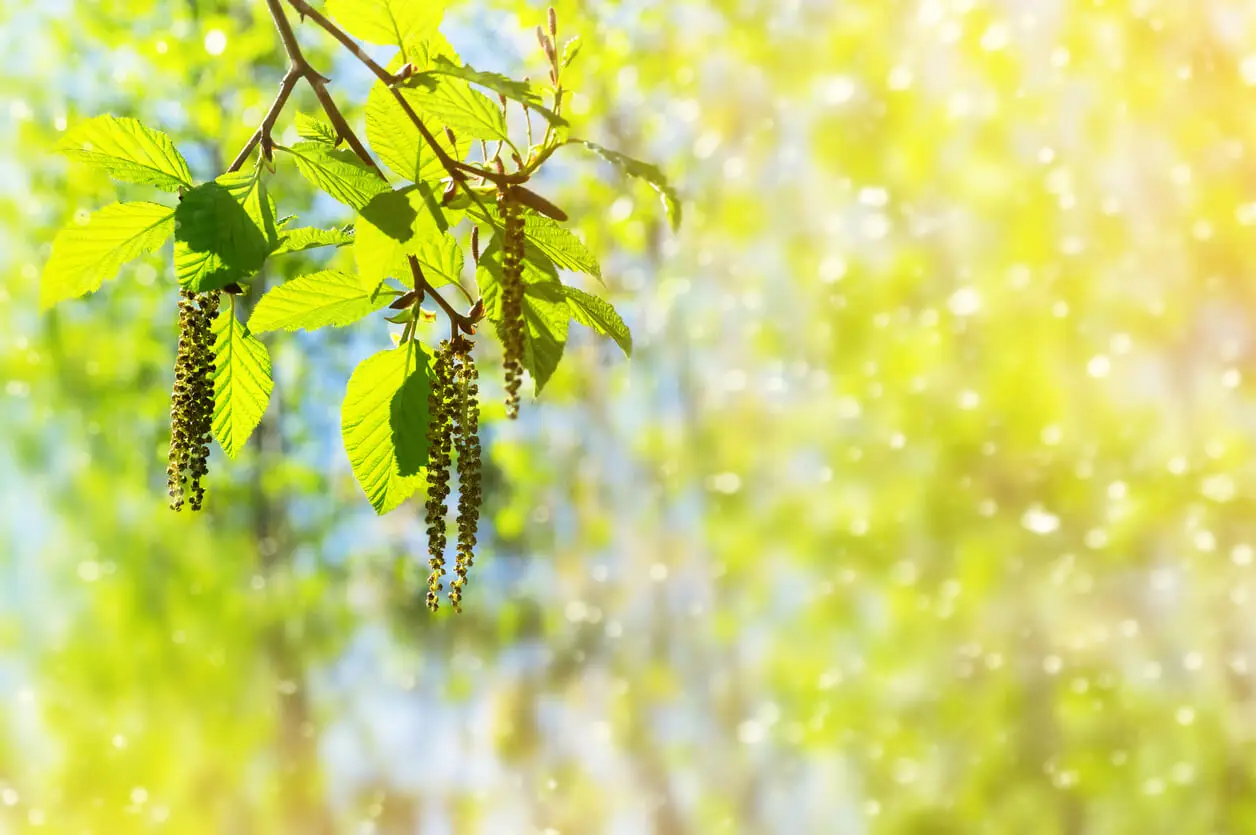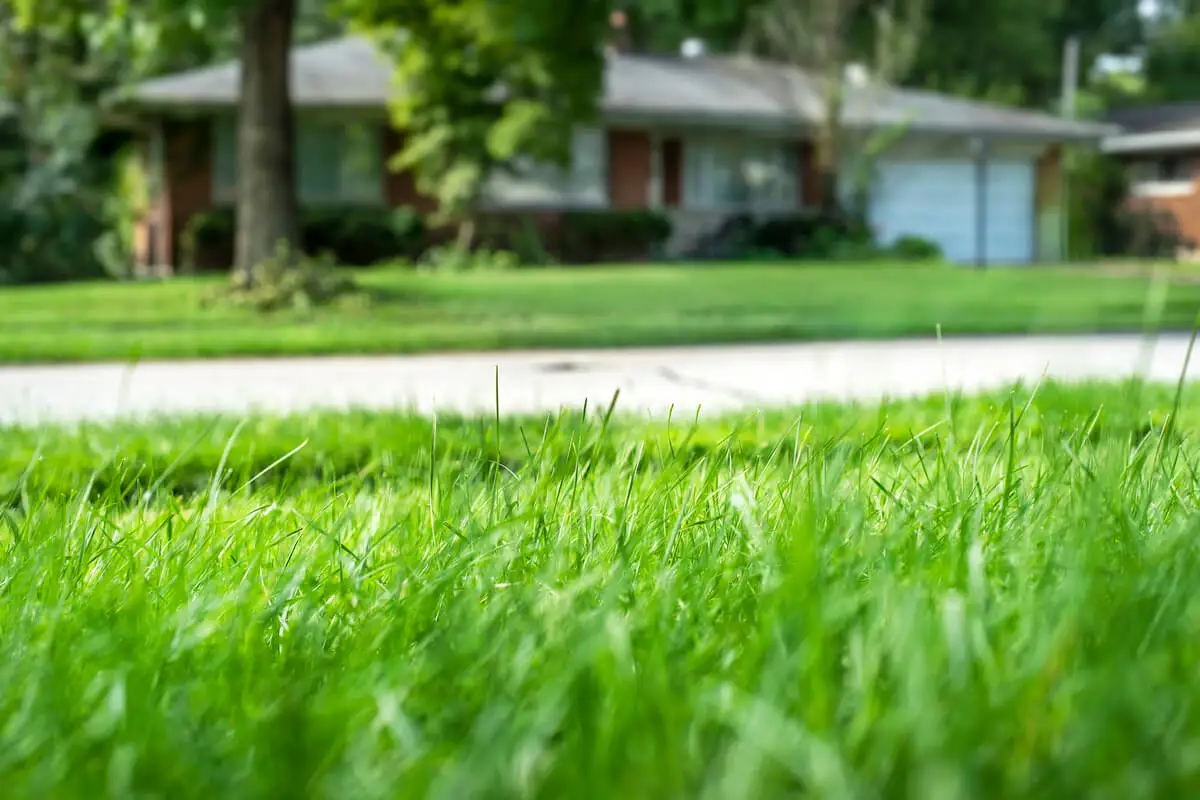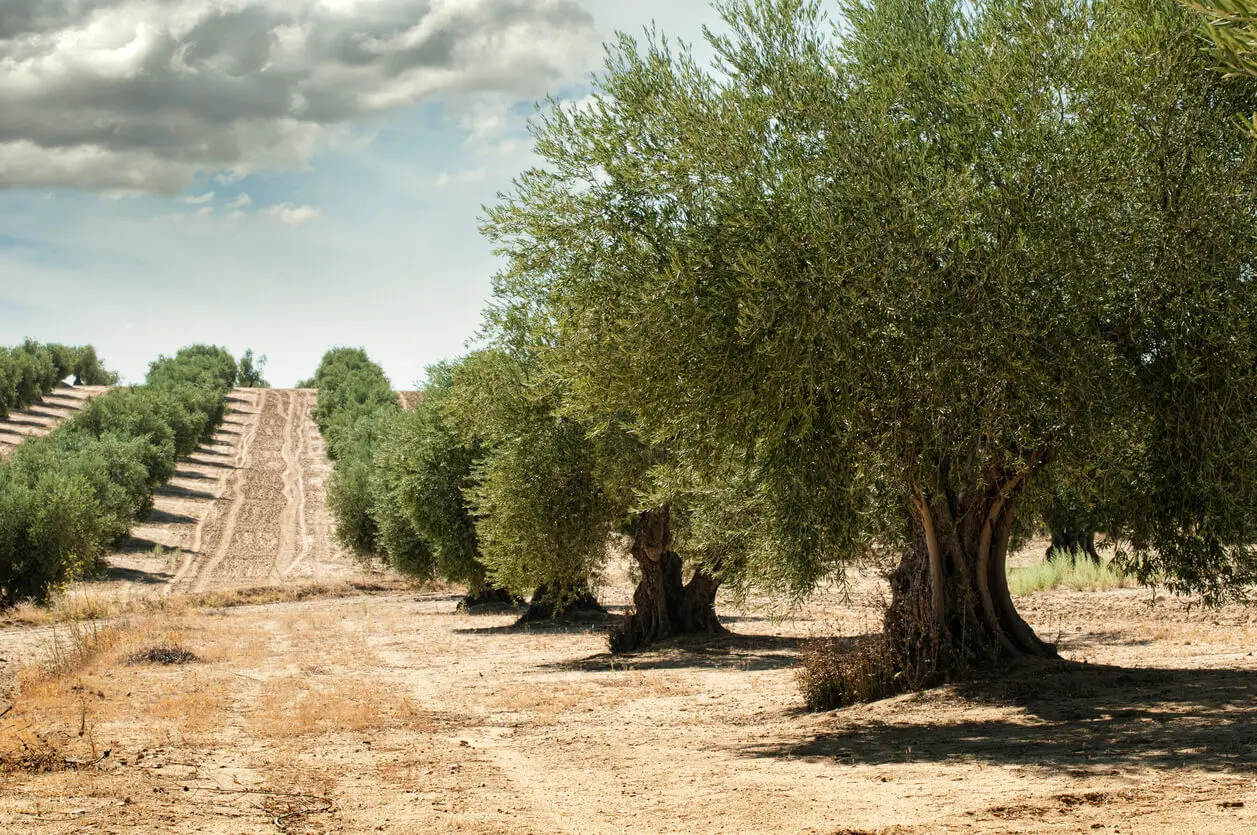15 House Plants that Worsen Allergies


Reviewed and approved by the doctor Mariel Mendoza
Despite their various benefits for decorating, health, and harmony, there are some plants that you should not have at home because they worsen allergies. These plants can trigger some reactions in sensitive people.
In particular, when spring arrives, most plant species, both arboreal and herbaceous, bloom strongly. This means an increase in pollen in the environment.
In fact, it’ll worsen allergies when kept indoors. Here are the plants with which you should take precautions.
The benefits and disadvantages of plants
Indoors, plants can have a decorative function. In this sense, they bring a note of naturalness to the atmosphere of the room in which they are located, whether it is the living room, hallway, bedroom, or bathroom.
There are several species common for such purposes, with or without flowers. Among the most colorful, attractive, and decorative are small palms, ferns, aloe vera, and orchids.
Beyond decoration, they also have other benefits. For example, some plants help purify the air, as well as reduce humidity, and control dust and suspended particles.
Some even believe that plants attract good luck.
However, they are not all benefits; there are also disadvantages to plants. There are indoor plants that could be dangerous because they are toxic, such as belladonna, philodendron, dragon tea, and hydrangeas.
They can also attract insects that are annoying and difficult to fight, such as ants or bees. And as if that were not enough, some of them provoke reactions in sensitive people. Such is the case of those who suffer from a pollen allergy.
The incidence of this problem can vary from one population to another: between 8% and up to 40%, depending on the region or time of year. A study found that more than half (52.8%) of the patients presenting respiratory symptoms suffered from pollen allergy.
Upon contact with this allergen, various symptoms may appear in the sensitive person:
- Red eyes
- A sneezing crisis
- Nasal congestion and runny nose
- Difficulty in breathing
- Muscle pains
Check out these: 8 Tips for Surviving Pollen Allergies
Plants that worsen allergies
According to some studies on the subject, at the beginning of spring, these symptoms of pollen allergy tend to flare up. They increase in intensity, especially when there is more sun and wind.
However, this is not the only kind of reaction that can occur in people with allergies in the presence of certain plant species. Bearing this in mind, let’s take a look at which plants you shouldn’t have at home if you suffer from allergies.
1. Plantains
Plantain is a common name that refers to several species, among which are the oriental plantain and the platanus x hispanica. Although they’re native to Europe and Asia, you can find them almost everywhere in the world, especially in parks and gardens.
They can reach great size. Some specimens reach up to 30 meters. Their main characteristic is a thick trunk, dense crown, palmate leaves, and fruits that resemble a hedgehog. They live for many years.
Flowering occurs in late winter and continues throughout the spring. Research indicates that the fuzz from the fruit can cause allergic reactions, unrelated to pollinosis.
2. Chestnut trees worsen allergies
Although an abundant species in temperate regions of the Northern Hemisphere, an allergy to chestnut pollen is rather rare, as mentioned in studies. However, it can cause sensitization in some people, so exercise caution.
3. Poplar
The name poplar generally refers to various species of the genus Populus. We know them as poplars. They’re not very tall trees, although some can reach 25 meters.
Moreover, they’re common in northern, temperate, or cold areas. In particular, the pollen of Populus nigra can be an allergen, although its activity in this respect is rather limited compared to other species.
4. Alder trees worsen allergies
The scientific name of this tree is Alnus glutinosa. It’s a species of the Betulaceae family.
Furthermore, it’s common in Europe, Asia, and North Africa. It grows up to 20 to 30 meters tall.
Although it’s being removed from urban environments, it’s still common in fields, especially along riverbanks. In terms of allergies, research indicates that 14.4% of asthma patients are sensitive to the pollen of this species.

5. Birch trees
Common name for Betula pendula, as well as various deciduous trees of the Betulaceae family. Its size varies between 10 and 30 meters.
This tree has rhomboidal leaves and whitish bark. It’s abundant in much of the northern hemisphere, where it forms large forests.
Its pollen is one of the major allergens in countries such as Japan, where it has been cultivated without control. In addition, it’s considered responsible for producing cross-allergies.
6. Ash trees
In a study conducted in Aguascalientes (Mexico), with allergic patients, it was found, after a skin test, that 44% were sensitive to Fraxinus excelsior. This species is commonly known as ash.
7. Holm oak trees
The holm oak (Quercus ilex) belongs to the Fagaceae family. It is distributed in many parts of the world, especially in temperate climates, both in the north and south.
Its wood is highly valued. However, its pollen is harmful to allergy sufferers. In the spring, during the months of April and May, when it is in full bloom, it causes outbreaks.
Find out: 31 Recommendations to Prevent Allergies in Your Home
8. Grasses that worsen allergies
So far we have talked about trees, i.e. large plant species. However, it’s possible to have them at home when you have a large garden or yard.
Now we will see that also among the plants that you should not have at home if you suffer from allergies, there are some that are smaller. Such is the case of grasses, to which the common grass (Cynodon dactylon) belongs.
You can find these grasses in golf courses, parks, avenues, squares, or in yards. However, they’re not the most recommended for sensitive people, as they can affect the respiratory tract. The possibility increases when the grass has been cut since the spikes can be agitated and disperse more pollen.

9. Parietaria
This is also called wall weed, because it can take advantage of almost any crack or space, between walls or sidewalks, to grow. It’s a herbaceous plant half a meter high. Its leaves are small, oval, and hairy. Flowering can occur throughout the year, with peak pollination between April and June.
Studies indicate that species of the genus Parietaria are one of the most frequent causes of pollinosis in the Mediterranean area. In particular, P. judaica and P. Officinalis are considered capable of producing sensitization.
10. Sunflowers
Within the genus Aster are some of the most widely used plants in gardening, whose flowers are also incorporated in bouquets. However, at the same time, they have a high allergenic potential.
An example of these is sunflowers. It’s interesting to note that there are people allergic to the pollen of their flowers, and there may be a reaction to eating sunflower seeds, although the latter is not very common.
11. Dahlias
Dahlias are also of the genus Aster. Because of their attractive colors, it’s common to see them in bouquets for decoration.
However, they’re not suitable for people with allergies. They can cause the onset of various nasal symptoms.
12. Jasmine
Jasminum officinale, whose common name is jasmine, belongs to the genus Olacea. And although it’s very beautiful and simple to grow in pots or in the ground, it’s among the plants that you should not have at home if you suffer from allergies.
13. Privet plants worsen allergies
Privet (Ligustrum vulgare) is another member of the Oleaceae family. This is a shrub that grows up to two meters. It can be seen in urban areas, where it’s often planted in squares and avenues due to its attractiveness and the pleasant fragrance of its flowers.
Furthermore, it’s common in indoor gardens, since it can grow in the shade. However, it’s not suitable for people with allergies and respiratory problems.
14. Olive tree
People highly value Olea europaea for its fruits and derivatives. However, this is another species to avoid, especially in spring, when it flowers, since its pollen production is also high.

15. Lilo trees worsen allergies
The lilo (Syringa vulgaris) is a relative of the olive tree, with which it has in common the fact that it produces abundant pollen. However, because it’s a species that can thrive in almost any type of soil and has very showy flowers, it is very popular in gardening.
Recommendations to prevent allergies
It’s possible that during springtime some symptoms of hay fever or allergic rhinitis appear. In this sense, if you’re a sensitive person, you should take some precautions.
For example, if you’re going outdoors during this season, and you have to go through areas where there’s an abundance of the aforementioned plant species, you should wear a mask. Also, if you travel by car, keep the windows closed.
Of course, you should not have these plants at home if you suffer from allergies. If there are any, it’s advisable to remove them. Of course, it’s not always good or possible to do this when it is a tree in the garden (cutting it depends on the legislation in each country).
In any case, take precautions, such as avoiding exposure to them in spring, or keeping the doors and windows of your room open. Also, when you are going to ventilate the rooms, try to do it early in the morning.
Finally, if you’re thinking of decorating your home with plants, try to do it with those that aren’t going to cause reactions if you or some of the people at home are allergic. There are several plants that you should not have in your home; however, there are still many other options to choose from.
All cited sources were thoroughly reviewed by our team to ensure their quality, reliability, currency, and validity. The bibliography of this article was considered reliable and of academic or scientific accuracy.
- Alonso Díaz M. Alergia a los pólenes de ciprés y olivofenotipos clínicos y perfil de reconocimiento de alérgenos en pacientes con doble sensibilización. Universidad de Alcalá, 2017.
- Ayuso R, Carreira J, Polo F. Quantitation of the major allergen of several Parietaria pollens by an anti-Par 1 monoclonal antibody-based ELISA. Analysis of crossreactivity among purified Par j 1, Par o 1 and Par m 1 allergens. Clinical & Experimental Allergy. 1995; 25: 993-999.
- Bedolla-Barajas M, Valdez-López F, Arceo-Barba J, et al. Frecuencia de sensibilización a pólenes de la subclase Rosidae en pacientes con alergia respiratoria. Revista Alergia México. 2014; 61(4): 327-335.
- Calzada Ricote D. Alergia al polen de olivo: potencial terapéutico de péptidos definidos a partir de su alérgeno principal, Ole e 1. Madrid: Universidad Complutense, 2015.
- Cosmes Martín P, Moreno Ancillo A, Domínguez Noche C, et al. Sensibilización a polen de castaño y polinosis en el norte de Extremadura. Allergologia et Immunopathologia. 2005; 33(3):145 – 150.
- Galindo H, Girón K, Pedroza A. Reacciones cruzadas. Alergia, abedul y alimentos. Alergia, asma e Inmunología pediátrica. 2007; 16(1): 25-28.
- Gastaminza Lasarte G. Alergia al polen de pino: ¿solo en Euskadi? Sancho El Sabio. 2003: 18: 105-118.
- González-Mancebo E González de Olano D, Trujillo M, et al. Prevalence of sensitization to lipid transfer proteins and profi lins in a population of 430 patients in the south of Madrid. J Investig Allergol Clin Immunol. 2011; 21(4): 278-282.
- Nitiu1 D, Mallo A, Medina I, Parisi C. Atlas de pólenes alergénicos de Buenos Aires, Argentina. Archivos de alergia e inmunología clínica. 2019; 50(2): 67-88.
- Suárez-Gutiérrez M, Macías-Garza J, López-Ortiz D, Fuentes B, Álvarez-Cardona A. Sensibilización a aeroalérgenos en pacientes con rinitis alérgica en Aguascalientes, México. Rev. alerg. Méx. 2019; 66(4): 388-393.
- Ukleja-Sokołowska N, Gawrońska-Ukleja E, Łukasz Sokołowski, et al. Sunflower seed allergy. International Journal of Immunopathology and Pharmacology. 2016. https://doi.org/10.1177/0394632016651648
This text is provided for informational purposes only and does not replace consultation with a professional. If in doubt, consult your specialist.








